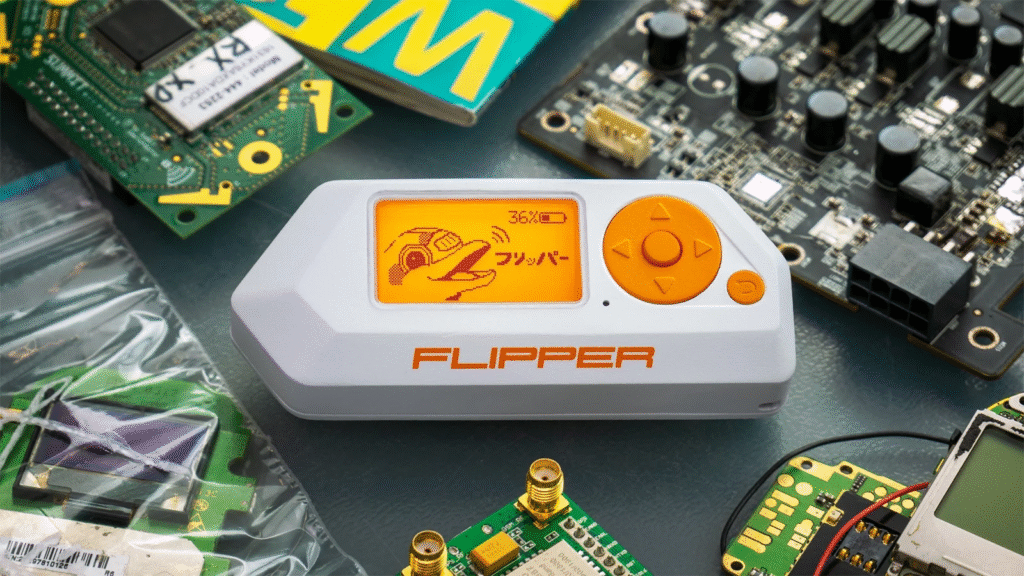
How does the Flipper Zero craze affect low-proximity card security?
The Flipper Zero is a small yet powerful, multi-functional hacking tool often referred to as a “hacker artefact” on platforms like TikTok and Reddit. It supports interaction with multiple wireless protocols, such as RFID and NFC, providing users with convenient testing capabilities. However, this convenience also exposes the security flaws of old technologies, especially the low-frequency proximity card widely used in access control systems.
What is a proximity card
A proximity card is a contactless access card that typically operates in the 125 kHz (low-frequency) band, communicating with a reader using RFID technology to verify identity and control access. Due to its low cost and ease of use, it has been widely adopted in access control systems across various enterprises, schools, apartments, and other locations over the past few decades.
However, most proximity cards use weak encryption or no encryption at all, making them extremely easy to clone. Tools like Flipper Zero can easily read, store and replay card signals, allowing attackers to bypass access control systems. Therefore, security experts generally believe that proximity cards have become a significant hidden threat to modern access control security.

Why is Flipper Zero so popular
The Flipper Zero has not only sparked heated discussions in the global cybersecurity community but has also quickly gained popularity on social platforms such as TikTok, YouTube, and Reddit. Many technology enthusiasts share demonstrations of using it to unlock access control, copy employee badges, simulate transportation cards, etc. Although these operations have specific educational significance, they also expose the vulnerability of traditional access control systems.
The popularity of this device has raised concerns for businesses and institutions that rely on outdated proximity cards. In the past, cloning access cards required expertise and expensive equipment; however, now, anyone can easily obtain this ability for just $200. This “democratisation” of technology means that security vulnerabilities are no longer theoretical risks but real and prevalent threats, forcing all industries to re-evaluate the security of access control systems.

Security risks of proximity cards
Low-frequency proximity cards, such as HID Prox, pose significant security risks. These cards utilise only static ID codes for authentication without employing encryption or challenge-response mechanisms. This design flaw makes them vulnerable to signal replay attacks.
More worryingly, using tools such as Flipper Zero, attackers can clone cards in seconds without specialised skills. Even systems that use simple signal obfuscation techniques are not immune to such attacks. Most dangerously, the entire cloning process can be completed without the cardholder’s knowledge, posing a serious threat to the physical security of the enterprise.
How enterprises can deal with the security threats posed by Flipper Zero
The rise of Flipper Zero has triggered a surge in security audits. IT and facility managers are now utilising these tools to test their systems and identify areas for improvement. Some companies are replacing proximity cards with more secure alternatives, such as smart cards or mobile device-based access control systems.
Additionally, many companies are training their employees to recognise and report suspicious behaviour. Raising awareness is critical. Just as phishing awareness helps reduce email attacks, understanding how tools like Flipper work can help mitigate physical access threats. Replacing readers and credentials is costly, but leaving them alone is riskier.

Future-Proofing with Secure Technologies
Organisations serious about access control are migrating to systems based on 13.56 MHz smart cards, using protocols such as MIFARE DESFire or FIDO. These offer mutual authentication, encrypted communication, and dynamic keys, making them much more challenging to spoof.
Moreover, integrating access control with mobile credentials and multi-factor authentication adds another layer of protection. While proximity card systems may still have niche uses, they’re rapidly becoming outdated in security-sensitive environments.
Legal and Ethical Implications of Flipper Zero Use
Flipper Zero itself is not illegal, but its misuse can be. Cloning someone’s access badge without permission constitutes unauthorised access and, in many jurisdictions, is a criminal offence. The line between ethical hacking and malicious activity is thin and must be respected.
Users should be aware of local laws and use such devices responsibly. Organisations, meanwhile, must treat Flipper Zero as a wake-up call. Ignoring it means leaving the door open—literally—for potential breaches.
Proximity cards need to address security concerns
The Flipper Zero craze has exposed the problems with many proximity card systems. Investing in modern encryption systems to enhance proximity card security has become a top priority. Flipper Zero does not undermine the security of proximity cards; it simply forces the industry to address these fundamental security issues that have been ignored for too long.


